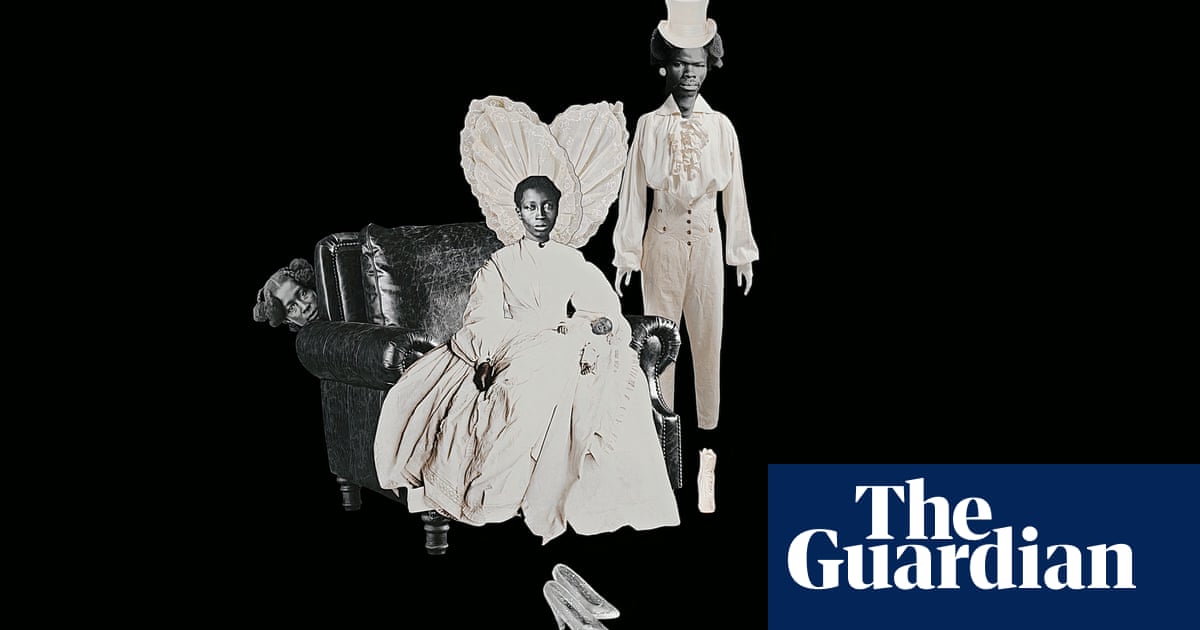Ke Go Beile Leithlo(I’ve Got My Eyes On You) is part of a project calledDitoro, meaning “dreams” in my home language, Setswana. It is a growing body of work exploring archival imagery through the lens of dreams and memory – a space where the past and present blur, where ancestral fragments reappear in unexpected ways and where dreams become portals into untold stories.
This piece depicts a dream I had a while back that lingered long after I woke. In the dream, two figures commanded the space: a woman sitting gracefully on a dark leather couch, her white dress billowing around her, with a lace structure rising from her shoulders like wings. She was calm, majestic, almost otherworldly. Beside her stood a tall figure – a man, confident, dressed in white trousers and a flowing blouse, topped with a white hat. An enigmatic guardian or a silent observer.
The dream had a quiet strangeness to it. There was a woman peeking from behind the couch; not threatening, but curious. In the dream, I was in deep conversation with the figures in the foreground. Though I can no longer recall the exact words, they spoke in whispers. After I woke, I realised that the two figures in the dream were my maternal grandparents who had passed away many years ago. I could only identify them through family photographs.
The dream not only inspired the collage but the entireDitoroproject. To create the work, I used a combination of imagery found in public archives, photographs I’ve taken and my own family archives. I carefully selected the images based on energy, gesture and expression. I cut, rearranged and layered the elements to recreate the surreal mood of the dream.
Each decision – from costume to posture – was intuitive, like following a thread back to something half remembered.Ke Go Beile Leitlhowhispers of unseen forces at play, of histories watching, waiting and holding their gaze long after the moment has passed. This work is personal. It’s about listening to dreams as messages and using art to make sense of them. ThroughDitoro, I’m learning to trust what my inner world is trying to say – and offering those visions back as stories worth telling.
Tshepiso Moropa is a collage artist based in Johannesburg. She is one of four winners of theV&A Parasol Foundation prize for women in photography 2025. Her work will be exhibited at a group show at theCopeland Gallery, Londonfrom 16-25 May
